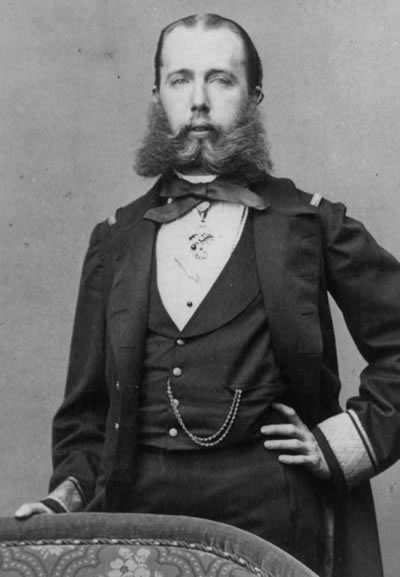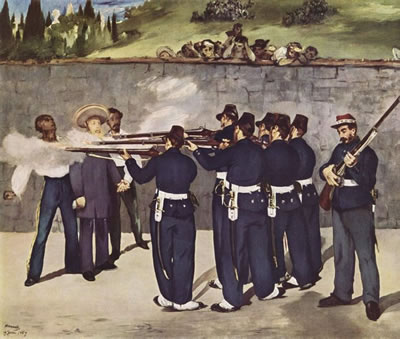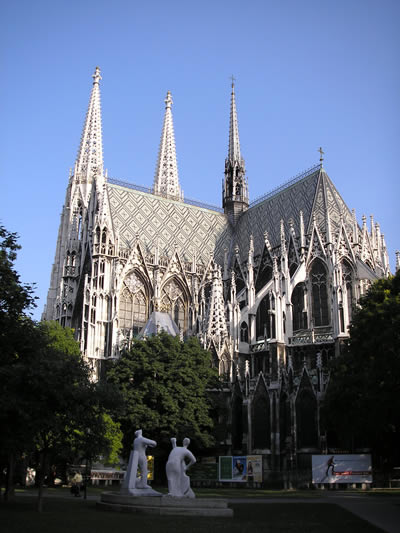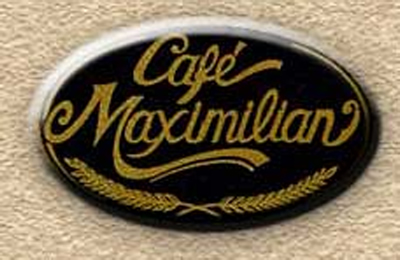Maximilian I of Mexico
The Vestiges of the Habsburgs in Mexico and the Southwest
By Peter Pabisch
When looking at the Southwestern part of the United States and Mexico there are some remaining vestiges of the Spanish Habsburg Empire of the 16th century and the Emperors Charles V and Philip II. Known then as the Viceroyalty of New Spain, it was a part of the Empire where “the sun never sets.” Later, when Mexico had become independent, another member of the Habsburg dynasty made his mark on the history of the country.
The younger brother of Emperor Franz Josef, Ferdinand Maximilian, ruled as Emperor Maximilian I of Mexico from 1864 - 1867 during the “Second Mexican Empire,” a time of rapid political change in Europe and the Americas.

Habsburg Archduke Ferdinand Maximilian of Austria
The Camino Real or Royal Road was built under the Habsburg Emperors Charles V and Philip II and served as the primary route from Santa Fe to the former capital of New Spain - Mexico City. It was not only a historic trade route but a symbol of those diverse influences contributing to the cultural evolution of the country. Among such influences which have contributed to this cultural phenomenon are those surrounding the Habsburgs.
At the end of the Mexican-American war of the late 1840s the United States acquired more than half of Mexico, part of California, all of Arizona and New Mexico, and Western Texas. During Ferdinand Maximilian’s reign such world events occurred as Italy’s independence in 1866, the Franco/Prussian War of 1870/71 and the American Civil War. In the 1860s Mexico was occupied by the French. Using Mexico’s failure to repay its foreign debts as a pretext and his own desire to revive the Mexican monarchy, Napoleon III placed an empereor on the throne in 1864, Habsburg Archduke Ferdinand Maximilian of Austria. Embroiled in its own civil war at the time, the United States government under Abraham Lincoln did not intervene.
Ferdinand Maximilian
He was born in 1832 as the first of three younger brothers of the Austrian and later Austro-Hungarian Emperor, Franz Josef I. Noted for his particularly clever and curious nature, he was the favorite of his Bavarian mother Sophie. In February 1853, he married Princess Charlotte of Belgium and took up residence in the Austrian-held parts of Northern Italy. There he became a popular leader who represented Austria well before his acceptance of the imperial crown of Mexico in 1864.
Originally brought to Mexico by France as a figurehead, the young Maximilian proved to be quite independent. Unlike his conservative brother, Franz Josef, he was a liberal and saw himself as Mexico’s Emperor, not a mere tool of the French government. Confronted initially by huge debts incurred by France, including the upkeep of the French troops, he nevertheless enjoyed their support and even had an Austrian volunteer regiment.
All of this contributed to the success of the first two years of reign. His primary interest was that of Mexico and the welfare of the Mexican people and, he attempted to govern in a manner which would resolve national disputes. He hoped that his liberalism would foster reconciliation with the republican opposition; however, his throne remained in danger because he failed to understand that they viewed him primarily as a French puppet.

"The Execution of Emperor Maximilian"
(Edouard Manet, Musee du Louvre, Paris)
Confronted with a civil war and the republican forces led by Benito Juárez, he felt his influence was rapidly eroding. With the growing reality of a return of the Juárez regime he was able to hold out for less than one year before his troops were overrun in Querétaro. On June 19, 1867 Ferdinand Maximilian was executed by firing squad. He was 35 years old. His body was returned to Austria where it lies in the Imperial Crypt in Vienna.
Vestiges of Maximilian’s Reign
What remains of this historical episode today? We know that long before he accepted his throne in Mexico, the younger Ferdinand Maximilian tried to do everything to show loyalty to his brother Franz Josef, on whose life an attempt was made. To remember this event, Maximilian had the ‘Votivkirche’ erected, a church which is one of Vienna’s landmark buildings on the ‘Ringstraße,’ the city’s grand boulevard surrounding the innermost district. In this Neo-Gothic church one finds a corner dedicated to Maximilian and Mexico and large stone plaques were set up after Maximilian’s tragic fate in Querétaro. Franz Josef also had a larger-than-life statue of “Ferdinand Maximilian, Erzherzog von Oesterreich, Kaiser von Mexiko,” erected near Schoenbrunn Castle in 1871. It is rarely noticed today.

The Votivkirche, Vienna
Most characterizations of Maximilian and his ambitious, beautiful wife Charlotte show them as civilized, even parliamentarian aristocrats, but fail to go beyond immediate national concerns of Mexico and the Southwest. Franz Werfel’s film script, Juárez and Maximilian, became a prominent film in 1939, with Bette Davis in the role of Charlotte. In the early 1950s, the film Vera Cruz, with Gary Cooper as a former confederate officer and Burt Lancaster as a freelance mercenary playing the main roles, portrayed Max as a friendly, often funny, but ultimately absolutistic leader who wanted to rob Mexico of its gold and democratic freedom.
The Maximilian Mystery
The historical record shows that Ferdinand Maximilian was executed by Benito Juárez and the rightful Mexican government. To further add to the mystery surrounding his final days, a recent account by Johann Georg Lughofer claims that Maximilian was not killed, but because the bullets were blank, he survived, fled to San Salvador under a pseudonym and enjoyed a long life. His freemason “brother,” Benito Juárez, was supposed to have made his escape possible. There is, however, no serious proof to verify this amazing story. [Johann Georg Lughofer, “Des Kaisers neues Leben. Der Fall Maximilian von Mexiko.” Vienna: Carl Ueberreuter, 2002.]
Puerto Vallarta, a Mexican city of culture and tourism on the Pacific Coast, became widely known when film director John Houston chose it as his film location for Tennessee Williams’ “The Night of the Iguana.” In the center of town it the Restaurant & Café Kaiser Maximilian named after the unfortunate Habsburg. Owner Andreas Rupprechter-Angleberger, a native Austrian from Kitzbuehel, offers the most exquisite Austrian cuisine, and his skills as a gourmet chef are coupled with his interest in Kaiser Maximilian’s brief reign. Pictures and memorabilia of Ferdinand Maximilian decorate the restaurant which is located in the hotel, Los Arcos.

Cafe Maximilian
Peter Pabisch, Professor Emeritus of German and European Studies at the University of New Mexico in Albuquerque and co-founder (1975-76) and co-director of the German Summer School of New Mexico located in the village of Taos Ski Valley, is writer of lyric and poetry and has also published numerous academic titles on German authors.
